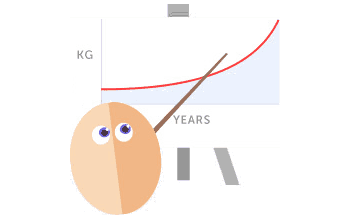carorees wrote: Even if 30% of calories from carbs is where many low carbers end up, I think that a fair comparison of low-fat vs low-carb should actually use a low carb diet? And if they choose to use moderate carbs (30%) on the basis that long-term that's what low carbers eat then they should also use the fat level that most low-fat dieters end up eating which is a good deal higher than 7%, so it is still an inappropriate diet comparison whichever way you cut it!
The short version of my extended comment below is that I wonder if it would be more acceptable if the researchers had found a trial arm signifier other than LC with its usual connotation of LC to describe this (NB, the title was
Is a Calorie a Calorie? Metabolic Fat Balance Following Selective Isocaloric Restriction of Dietary Carbohydrate Vs. Fat in Obese Adults and in the text they use LC/LF to describe the trial arms which seems reasonable)? Plus, after a look through the numbers, if I were testing the hypothesis for which they were funded, I'm not sure that I could change the design in a helpful way and still test this hypothesis.
-------
To be clear, that 30% carbs wasn't an explanation that the authors offered but a side note of mine that was a related observation. The energy restricted part of the study was approx. 2000 kcals per day so 30% was approx. 150g of carbs: a lot more than you or I would eat but not outrageous for a LC assessment over that time period.
[I deleted another side note.]
eucaloric baseline diet (50% carbohydrate, 35 % fat, 15% protein) for 5 days followed by random assignment to 6 days of a 30% reduced energy diet achieved solely by restriction of either dietary fat (LF) or carbohydrate (LC)
So, afaict, for the trial design - the researchers premise was to reduce 30% of the overall energy intake from solely one macronutrient: either carbs or fat because the absolute amount of protein remains the same in the eucaloric and the 2 energy restriction arms (it's just a different percentage because of the manipulation of the other macronutrients). Based on their participants, this worked out at needing to eliminate approx. 800kcals which is 200g of carbs or 89g of fat. It wasn't feasible to omit more carbs in this trial design, that would have been more calories and there was a point at which that wouldn't have been possible for the low fat arm. If they'd assessed 50g of carbs in the LC arm, they'd have needed to cut an additional 400kcals from the overall energy reduced diet which wouldn't work for the LF arm because there were only 140kcals from fat in that arm with 7% (leaving aside the issue that they'd have been cutting 1200kcals which would be a 44% energy reduction and may well have had confounding physiological consequences).
In the eucaloric diet, and both of the trial arms, there were 420 calories from the protein. The approx. 2300/1580 other calories were made up carbs and fat, and in their respective trials, 800kcals had to be cut from either carbs or fat but, in the baseline diet (very close to a typical SAD), only 952kcals came from fat.
Given the near impossibility of designing a completely fat free diet and the then difficulty of the number of calories to be excised from the diet this strikes me as a reasonable design. Because, otherwise, they'd have had to opt for a 44% energy restriction in order to accommodate a similar reduction in calories in both carbs and fat. Yes, they could have made the energy restriction less to reach a point of equilibrium but then the changes in fat oxidation would have been negligible and there could be no effect size.
I have no idea why the scientists observed such a difference in fat oxidation rates: it might be interesting if they have some useful discussion of this, if/when this is written up for a journal rather than presented at a conference. It's interesting to note that the data from this may well have some interesting correspondences/differences wrt the same investigator's research into the effect of very low carbohydrate diet and energy expenditure (trial diet is 5% Carbohydrate, 15% Protein, 80% Fat).
https://clinicaltrials.gov/ct2/show/NCT01967563

 but any ideas that will widen my rather limited repertoire of main courses and improve my fat/protein ratio are gratefully received. And wow, avocado and eggs, are they scrambled?
but any ideas that will widen my rather limited repertoire of main courses and improve my fat/protein ratio are gratefully received. And wow, avocado and eggs, are they scrambled?







